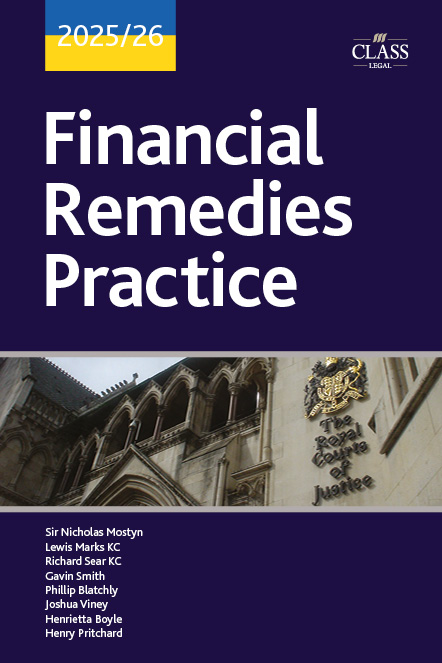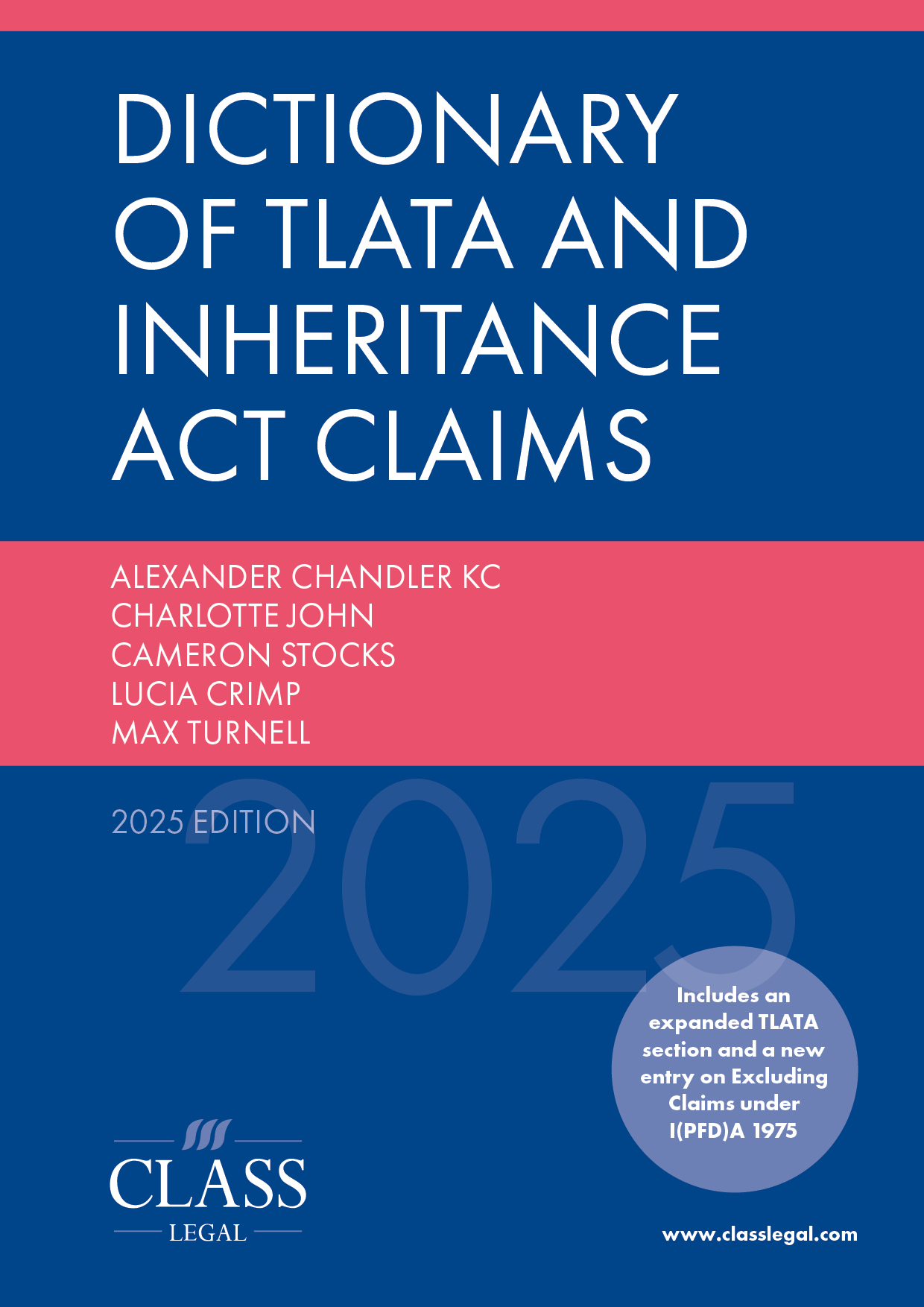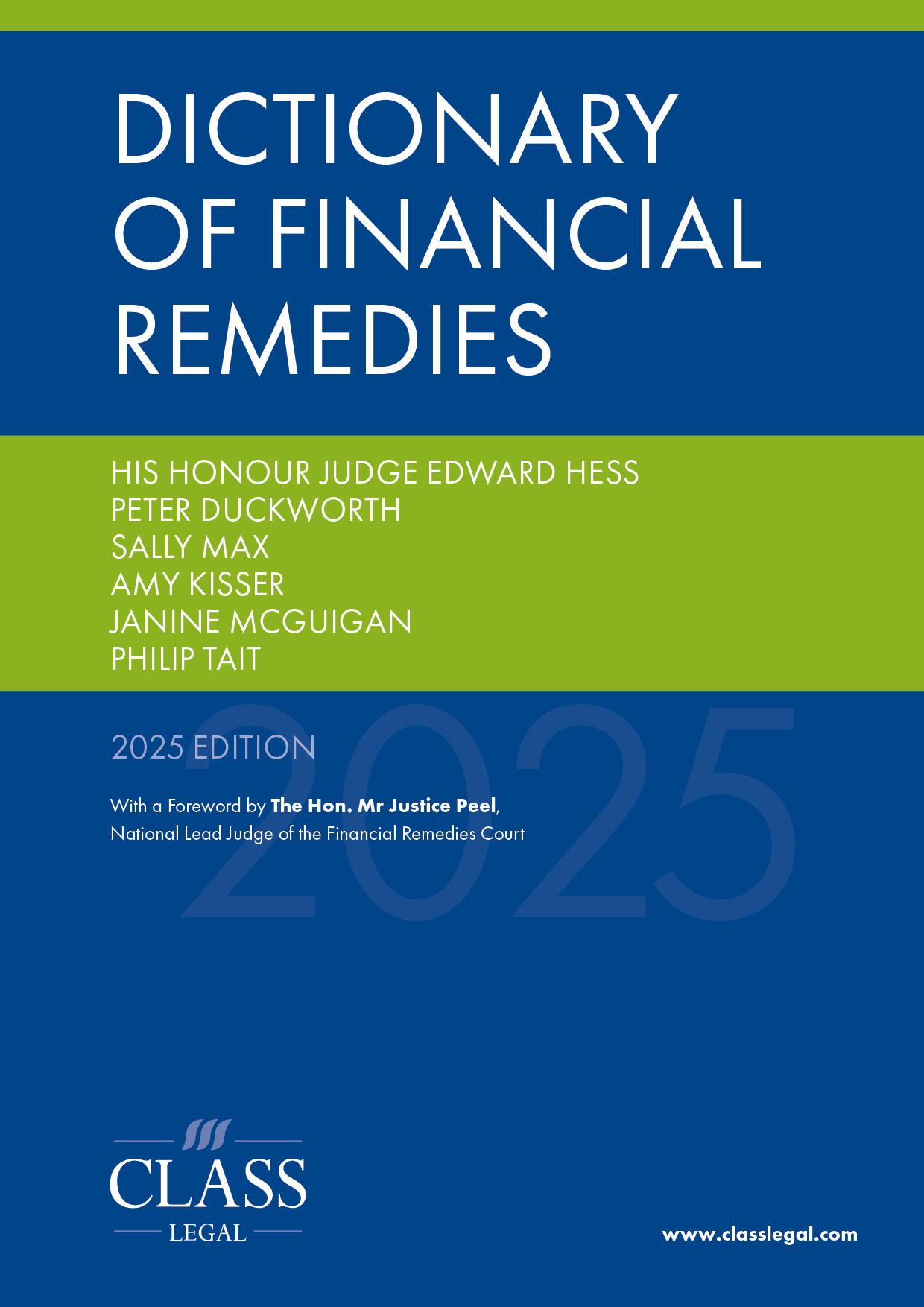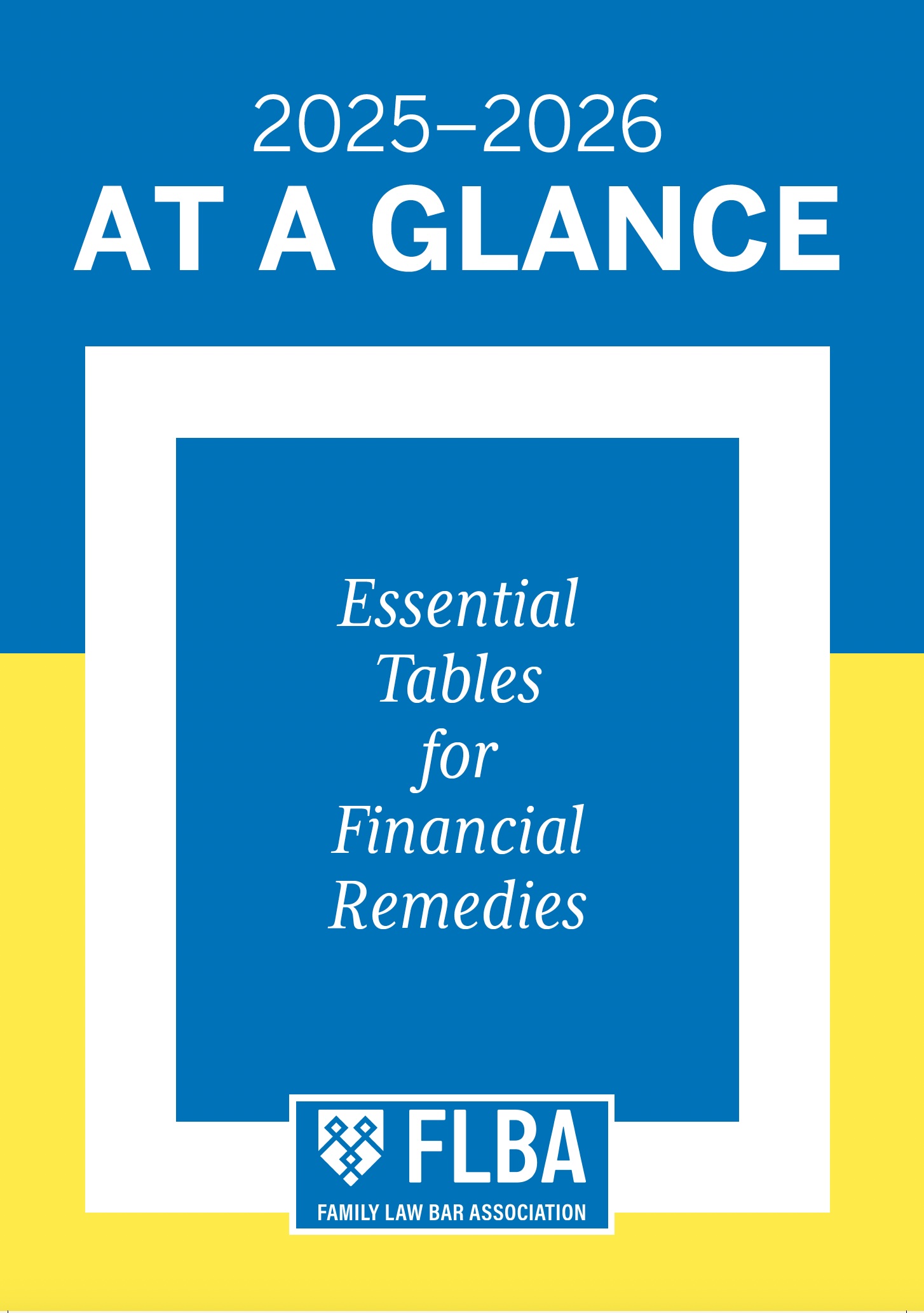
Money Corner: New Tax Landscape for High Net Worth Divorces
Published: 18/03/2025 06:00

The dust has (almost) settled following the Autumn Budget and April 2025 will bring about one of the biggest overhauls of the way the UK taxes foreign individuals in decades.
This piece covers the changes to the non-domicile (non-dom) regime and the other smaller measures announced in the budget that will have an impact on high net worth (HNW) and international divorces.
Old non-dom regime
Starting with the big headline – the abolition of the non-dom regime. The non-dom regime was originally introduced in 1799 to protect those with foreign income from the UK’s new wartime taxes. It remained relatively easy for an individual to claim they were non-UK domicile – as demonstrated when UK-born Mr Gulliver who at the time was HSBC’s chief executive claimed to be non-UK domicile.1 There were also cases of multi-generation families living in the UK and claiming non dom status even though they had lived their whole life in the UK.
This practice was bought to an end in 2017 when the laws changed to introduce a new concept of deemed domicile. Individuals would be deemed domicile in the UK if they had been resident in the UK for 15 out of the previous 20 years, and those who are deemed domicile are subject to tax on their worldwide income and gains in the year that they arise.
Previously, non doms living in the UK could earn money overseas and those funds would not be taxable (or reportable) in the UK provided these funds were not remitted (bought) to the UK.
Any money that non doms earnt in the UK whilst living in the UK has always been and will remain taxable.
Non-doms effectively had three pots of money as set out in Table 1.
Table 1: Non dom regime up to April 2025
| Pot 1 | Pot 2 | Pot 3 |
| Money earned before arriving into the UK2 | Money earned overseas whilst living in the UK | Money earned in the UK whilst living in the UK |
| This money is always free of UK tax. It can be remitted (bought in) to the UK at any time and no taxes will be payable on those funds | This money is not taxable in the UK unless the individual brings it into the UK. When it is remitted (bought) to the UK it is taxable. The rate of tax depends on whether the funds are income or gains. The top rate would be 45% | This money will be taxed in the UK in the year it is earned. There are no further taxes on this money when it is accessed |
New Foreign Income and Gains Regime
From 6 April 2025 the non-domiciled regime will be abolished and replaced with the Foreign Income and Gains (FIG) regime. It is simpler to explain this regime in relation to new arrivers to the UK, ignoring non-doms or former non doms for a moment.
The new FIG regime works as follows: when individuals arrive in the UK and become resident here they will only pay UK tax on their UK-sourced income for their first 4 years of residency.3 Any offshore income or gains that they earn in those 4 years are outside the scope of the UK and this remains the case even if they bring that money into the UK. This is set out in Table 2.
Table 2: New FIG regime (for new arrivers to the UK)
| Pot 1 | Pot 2 | Pot 3 |
| Money earned before arriving into the UK | Money earned overseas whilst living in the UK | Money earned in the UK whilst living in the UK |
| This money is always free of UK tax. It can be remitted (bought in) to the UK at any time and no taxes will be payable on those funds | This money is not taxable in the UK for the first 4 years a person is living in the UK. They can bring this money into the UK with no charge to tax | This money will be taxed in the UK in the year it is earned. There are no further taxes on this money when it is accessed |
Individuals who have been living in the UK for more than 4 years at 6 April 2025 will be subject to UK tax on their worldwide income and gains regardless of whether they bring that money to the UK or not and regardless of whether they were formerly non dom in the UK.4
Note the charge to worldwide income and gains is on that money when it arises (either when the income is earned or if assets are sold). Take Pierre who is a French national and non dom living in the UK. He keeps all of his money in France, it consists of €10,000,000 investments, €2,000,000 in a bank account and he earns dividends of €1,000,000 per annum. At 6 April 2025 Pierre will not suffer an immediate charge to tax on all of his assets. Table 3 shows how his position is different under the old regime and the new regime
Table 3: Comparison of the old and new regimes
| Assets | Old (non-dom) regime | New (FIG) regime |
| Capital. €10,000,000 investments: €7m invested before arriving into the UK €3m in gains | Not taxable in the UK whilst held as investments. As and when he sells the investments the €3m gain would be taxable only if he remitted the gains to the UK | Not taxable in the UK whilst held as investments. As and when he sells the investments the €3m gain will be taxable in the UK |
| Capital earned before arriving in the UK. €2,000,000 cash | Not taxable in the UK | Not taxable in the UK |
| Annual income. €1,000,000 dividends | Not taxable in the UK unless remitted to the UK | Taxable in the UK |
| €6,000,000 of dividends earned whilst living in the UK but kept in France | Not taxable in the UK unless remitted to the UK | Not taxable in the UK unless remitted to the UK |
Transitional rules
Transitional rules will be in place for the next 3 tax years from 6 April 2025. These transitional rules are particularly generous and offer former non doms a much-reduced tax rate if they want to bring their funds onshore to the UK.
The transitional rules are only available for individuals who have previously used the remittance basis (these are individuals who have previously been non-dom in the UK and utilised the remittance basis). It is called the Temporary Repatriation Facility (TRF). It does not apply automatically, individuals have to be eligible and they have to make a notification to designate funds and pay the relevant charge under the TRF.
The reduced rate of tax that applies is 12% for 2025–26 and 2026–27 and 15% for 2027–28. Individuals will be able to designate offshore funds, pay the charge and then they can remit those funds into the UK without any further tax payable. Currently the top rate of tax for income earned offshore and remitted to the UK is 45%, therefore this a potential tax rate saving of 33%.
If we revisit Pierre from earlier. Pierre currently has €6m in dividends that he has earned in France whilst living in the UK. If he wanted to bring that money to the UK he would pay tax at 39.35% (being the top rate of tax for dividends in the UK). This would create a tax liability in the UK for Pierre of €2.4m.
Pierre qualifies for the TRF as he was formerly non dom in the UK and had claimed the remittance basis in the past. He could choose to designate the €6m in dividends and pay tax of 12%, being €720k. One he has designated and paid the charge there is no further tax payable when he brings those funds into the UK. Additionally, if Pierre wanted to keep the funds in France he could do so. There is no requirement that the money must be bought to the UK within a certain time frame.
Of course, if Pierre intended to return to France in the future and did not need to bring in funds to the UK for financial reasons, then he would not make the designation and keep the funds offshore.
If the money offshore was not earned dividends but earned income of €6m the savings under the TRF would be just shy of €2m.5
It cannot be overstated how valuable the TRF is for individuals who are former non doms and plan to remain in the UK and would like access to their offshore funds.
Individuals must make the designation of the funds on their self-assessment tax returns. The deadline for the tax return is 31 January following the end of the year:
| 2025–26 | TRF rate 12% | Deadline 31 January 2027 |
| 2026–27 | TRF rate 12% | Deadline 31 January 2028 |
| 2027–28 | TRF rate 15% | Deadline 31 January 2029 |
Once the deadline of 31 January 2029 has passed individuals will no longer to be able to make a designation.6
From 6 April 2028 onwards
Once the 3 years for the TRF has passed, any former non doms who want to remit money earned offshore whilst they were resident in the UK will pay tax in the UK. The rate of tax payable depends on the type of income or gain – the top rate of income tax is 45% and the top rate of capital gains tax (CGT) is currently 24%.
If the individual has been living in the UK for at least 4 years, all of their income and gains will be taxable in the UK regardless of whether they bring that money to the UK.
We know from studies that the majority of the HNW and UHNW have illiquid assets and keep investments in shares and property. Those investments will not immediately be subject to tax. However, if the former non dom is living in the UK when they sell the asset then they will be subject to tax in the UK on the gain. See Table 4.
Table 4: New FIG regime (for former non doms)
| Pot 1 | Pot 2 | Pot 3 | Pot 4 |
| Money earned before arriving into the UK | Money earned overseas whilst living in the UK (pre-April 2025) | Money earned overseas whilst living in the UK (post-April 2025) | Money earned in the UK whilst living in the UK |
| This money is always free of UK tax. It can be remitted (bought in) to the UK at any time and no taxes will be payable on those funds | This money is not taxable in the UK for the first 4 years a person is living in the UK. They can bring this money into the UK with no charge to tax | This money will be taxed in the UK in the year it is earned. There are no further taxes on this money when it is accessed | This money will be taxed in the UK in the year it is earned. There are no further taxes on this money when it is accessed |
Will the offshore-to-offshore divorce structuring still work?
Yes. It will work because if it is structured correctly it is not a remittance of funds to the UK, so it is not within the scope of UK tax regardless of the non-dom rules. The non-dom rules enabled an individual to build up funds offshore and shelter them from UK tax. The changes to these rules do not remove the shelter they just stop people adding anything underneath it.
For those not familiar with the offshore-to-offshore structuring which one judge called a ‘remarkable tax loophole’7 I will briefly describe it.
As we have seen throughout this article the non-dom regime is a brilliant regime if individuals want to keep their money out of the UK. If they want to bring their money into the UK it is quite obstructive as there will be high tax charges.
If non-doms are going through a divorce and they require access to offshore funds which would be taxed if bought to the UK, one option is for the settlement to be funded as an offshore settlement. Assuming the non-dom is H these are steps one would follow:
- Step 1: H would transfer the settlement funds from his offshore account to W’s offshore account (it has to be an offshore account).
- Step 2: The parties receive the Final Order.
- Step 3: After the Final Order, H and W are no longer connected people and therefore, W can bring the funds onshore with no tax implications.
Under this structure the funds end up in the UK but they are not deemed to be a remittance on H. There are obviously some nuances to this and traps for the un-advised. Notably if there are children or grandchildren of H this could be considered a remittance even if the steps are followed. Needless to say, advice should be sought if this is the route your client is seeking.
However, in principle this structure will not be impacted by these changes.
As the rules are changing, the advice to all former non-doms is to ring fence their funds where possible. The best HNW client would have a clear segregation of funds from pre-5 April 2025 and post-6 April 2025. If that hasn’t been done, there is still planning that can be achieved but it becomes messier.
Therefore, if you are representing a former non-dom and want to utilise the offshore-to-offshore structure you would only be using funds from Pot 2 (Table 4) to do this. That is money that has been earned offshore by the individual whilst they were resident in the UK which they have kept offshore.
Providing the conditions were met the above structure would enable individuals to remit funds onshore (in the UK) without paying additional tax.
Other changes from the Autumn Budget
CGT increases. The lower and higher rate of CGT will increase to 18% and 24%, respectively, for disposal made on after 30 October 2024. Previously we had two sets of rates (10% and 20% for disposals on shares and non-residential property and 18% and 24% for disposals on residential property). Therefore this has increased the tax payable on the sale of shares, business assets and commercial property by 4%.
Carried interest. The rate of CGT applied to carried interest will increase from 28% to 32% from 6 April 2025. Then from 6 April 2026 the carried interest regime will move into the income tax regime. This will bring the updated tax rate to 47% (being 45% income tax and 2% national insurance). This is a significant change for those working in private equity as a carry makes up part of their total compensation package.
VAT on school fees. Another highly publicised change announced was the introduction of VAT on school fees. This was announced on 29 July 2024 and it came into effect on 1 January 2025. Note that any individuals who prepaid school fees in an attempt to settle the fees before the introduction of VAT will still have a VAT obligation on those fees.8
Business Asset Disposal Relief (BADR). The rate for BADR (previously Entrepreneur’s Relief) has increased from 10% to 14% from 6 April 2025. It will increase again to 18% from 6 April 2026 and remain at 18%. BADR allows qualifying individuals to pay a reduced rate of CGT on their first £1,000,000 of qualifying gains. From 6 April 2026 the maximum value of this relief will be a tax saving of £60,000.
Late payment charges. From 6 April 2025 the interest rate of unpaid tax liabilities charged by HMRC will increase to 9%. If a client has historical tax liabilities it’s important to factor in the tax, the penalties and any interest owed to capture the full liability owed.
HMRC resources. HMRC will be given funding to hire over 5,000 compliance officers and debt management staff.
Pensions. From 6 April 2027 pensions will be inside the scope of inheritance tax (IHT). Under current rules pensions are exempt from IHT – meaning that when a person dies the pension pot is outside their estate and there is no 40% charge on the value. As a result, people with diverse portfolios would usually leave their pensions in the fund as part of IHT planning. That will now change. There is no immediate charge when the change comes in, the change is a reclassification of pensions as an asset now within the scope of IHT.
Stamp Duty Land Tax (SDLT) Additional rate rising to 5%. The former additional rate of SDLT was 3%. Whilst this is a relatively small increase the impact can be significant when applied to the high price of properties in England and Northern Ireland.9 This change was effective from 31 October 2024.











